|
Select from the buttons above or click on any of the
photos below to jump to the page for that item.
|
| Mark-8
Minicomputer
The Mark-8 Minicomputer was the worlds first
widely available personal computer. Introduced in the July 1974
issue of Radio Electronics. What made it even more personal is that
you had to build it yourself!
|
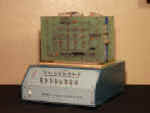 |
|
 |
The
Digital Group
Among the earliest of all companies to offer a
personal computer, the digital group began in August '74, initially
to support the Mark-8. They were among the first to offer users a
"warm boot" from built-in ROM.
|
|
| Digital
Group TV Typewriter
After the introduction of the Mark-8, the digital
group was formed to sell improvement information and add-on's to the
Mark-8. This video card was their first product.
|
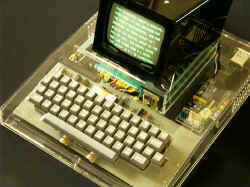 |
|
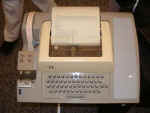 |
Teletype
Corporation ASR-33
The most common input/output device of the
minicomputer and early microcomputer era was the ASR-33 Teletype.
This version included a keyboard and papertape reader/punch. The
machine communicated via serial interface at 110 baud, or ten
characters per second.
|
|
| MOS
Technology Kim-1
MOS Technologies introduced the 6500
series microprocessors in early '75, and the Kim-1 as a demonstrator
meant for engineering commercial product development. It turned out
that the primary customers for this single board computer were
hobbyist.
The first batch of 6502 processors
had flaws that made some functions unusable. Mine is one of these
early versions. (Remember the early "math challenged"
Pentium chips?)
|
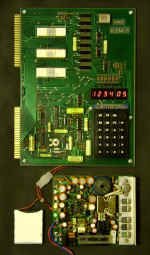 |
|
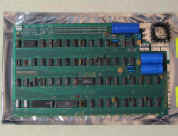 |
Apple
Computer
Apple-1 replica, and my own homebrew Apple-1,
built in 1977 from plans drawn by Steve Wozniak. The Apple 1 is
widely considered the most collectable of all old computers.
|
 |
|
|
 |
IMS
Associates IMSAI 8080
The first "clone" computer. This was the
industrial looking Altair clone with beefier power supply. A gift
from Tom Apel, thanks Tom!!
|
|
|
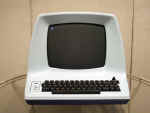 |
Lear Siegler
ADM-3A
The next advancement in I/O after the teletype was
the video terminal or "silent teletype". The most
popular of the early microprocessor era was the Lear Siegler ADM-3,
and later the 3A, which was nearly a direct replacement for the ASR-33
Teletype (less tape punch/reader), but added many new features. It even offered lower case(!)
characters as an option! Wow!
|
|
|
|
|
|
|
|
|
|
![]()